

The Poor Knights are considered to be New Zealand’s best dive destination. But you don’t have to be a scuba guru to enjoy them. A much simpler option is hopping aboard Perfect Day – a vessel that takes day-trippers to the islands for, well, a perfect day. Lawrence Schäffler enjoys.
It’s been quite a few years since I last scuba-ed at the Poor Knights – but a recent visit confirmed that these islands remain a remarkable reminder of a New Zealand that existed centuries ago. They teem with prolific life above and below the water – if you haven’t yet, add a visit to your Bucket List.
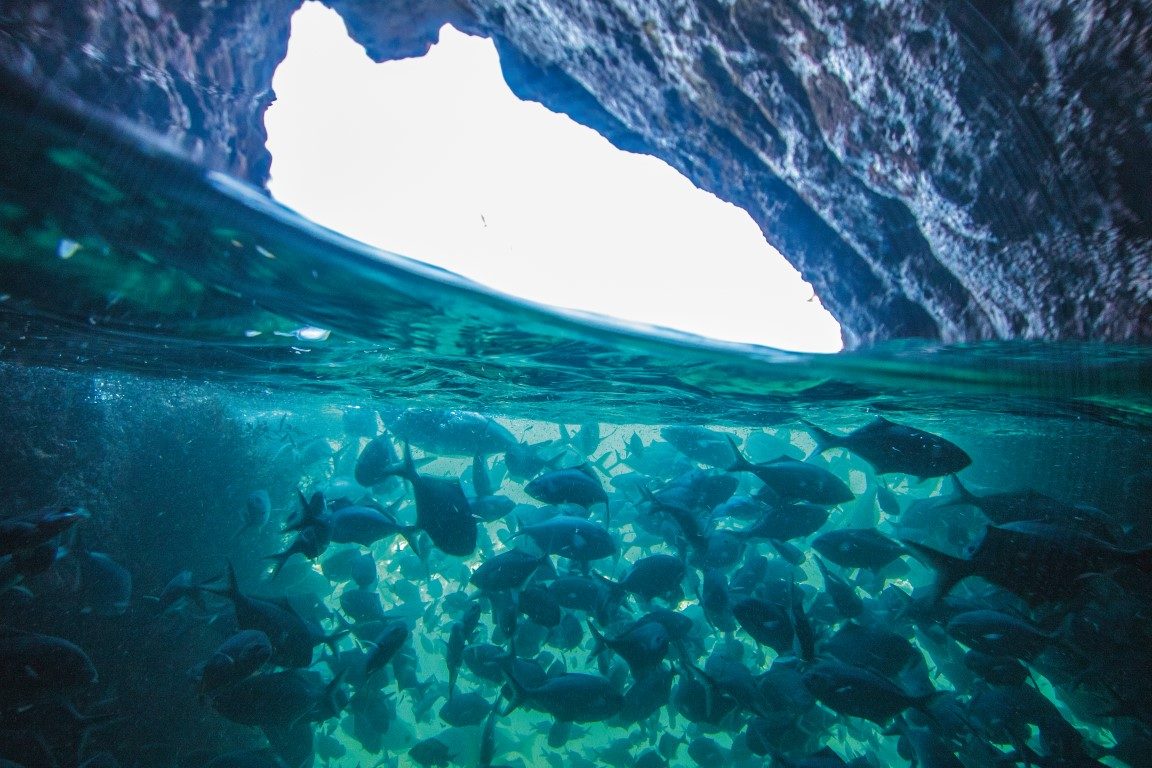
Finally designated a marine reserve in 1981 (after much paper shuffling and discussion), the protected status has seen the fauna and flora flourish (particularly underwater) – for me it’s very reminiscent of the Galapagos Islands. Of all the places I’ve dived around the world, I’d suggest the Poor Knights offers one of the most intimate interactions with marine life. Certainly the easiest.
I returned to the islands with a group of non-scuba friends in November aboard Dive Tutukaka’s Perfect Day – a 25m multi-deck charter boat designed to carry 75 guests of all abilities in terms of water activities. And even though I really enjoy scuba diving, I’d say the day trip is a far ‘wider’ and more memorable experience.
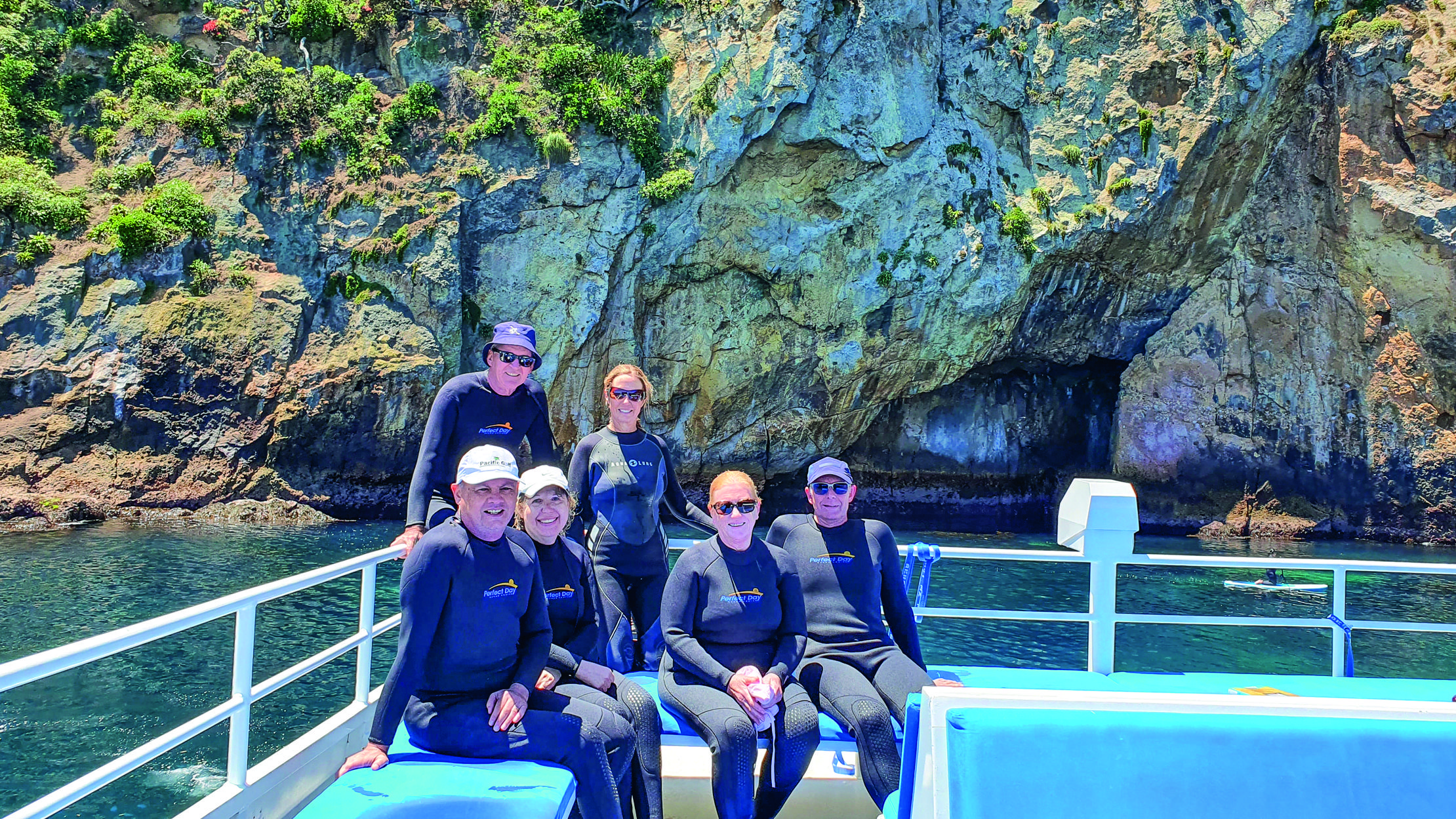
Scuba presents a very specific (underwater) slice of the Poor Knights. With the day trip you gain a better perspective of the islands’ history, geology, their extraordinary marine and bird life – all wrapped in pristine scenery. Much of the information is delivered via the colourful and entertaining commentary from skipper Simon Waites.
Perfect Day is based at Tutukaka on the mainland and the trip across to the islands – some 20km east – is a 45-minute run. Well, depending on the marine life you stop to investigate along the way, it might be a little longer. The boat leaves at 11.00am and returns to base by about 4.15pm.
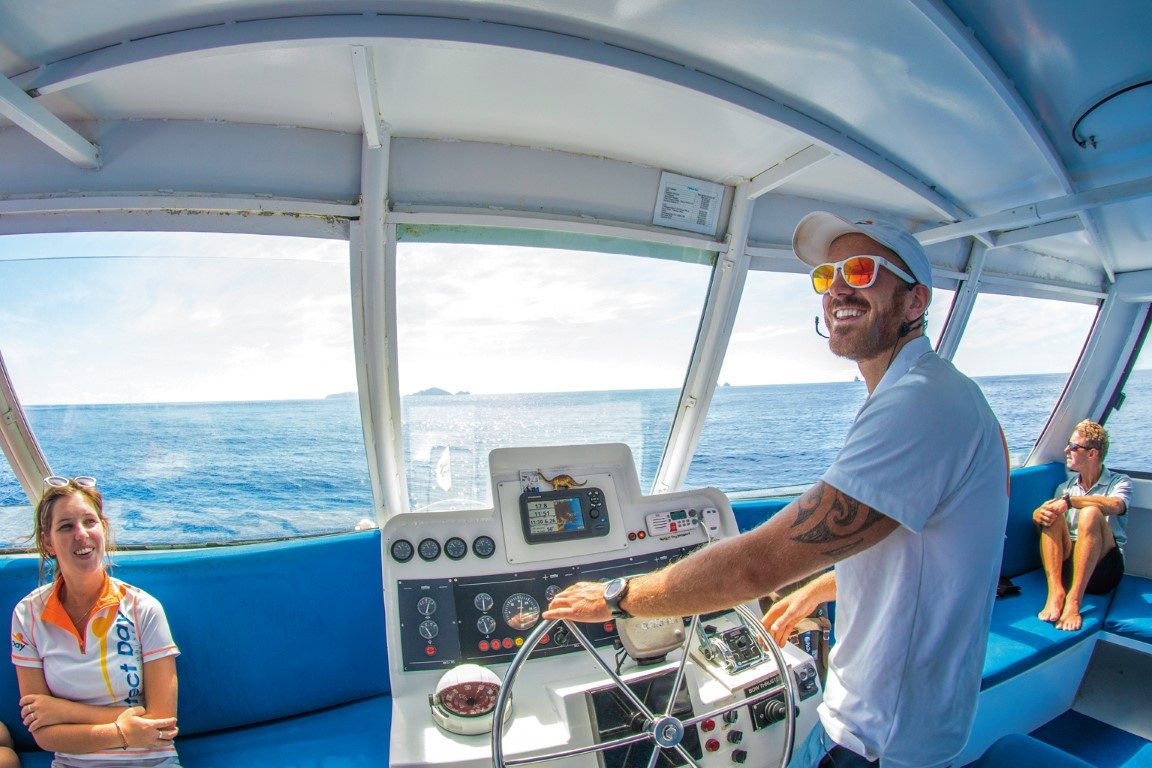
On board is a selection of gear for water sports – snorkelling (fins and masks), kayaking, paddle-boarding – as well as full wet suits. Yes, there is a wet suit for most shapes and sizes. Your ticket includes a buffet lunch (complete with fruit and veges) and after you’ve had enough water sports for the day you can dry off in the sun or use one of six hot showers.
Fish Alley
Thanks to its location – slap bang in the path of the warm East Auckland Current that originates in the tropics and sweeps south – the marine life that inhabits these islands is a lot more varied than that swimming around the rest of the country.
Locals call the area the ‘cetacean highway’ – it seems the islands are a kind of ‘waypoint’ on the migratory path for various species of whales and dolphins. Orca, says the skipper, often visit the islands in search of their favourite prey – stingrays.
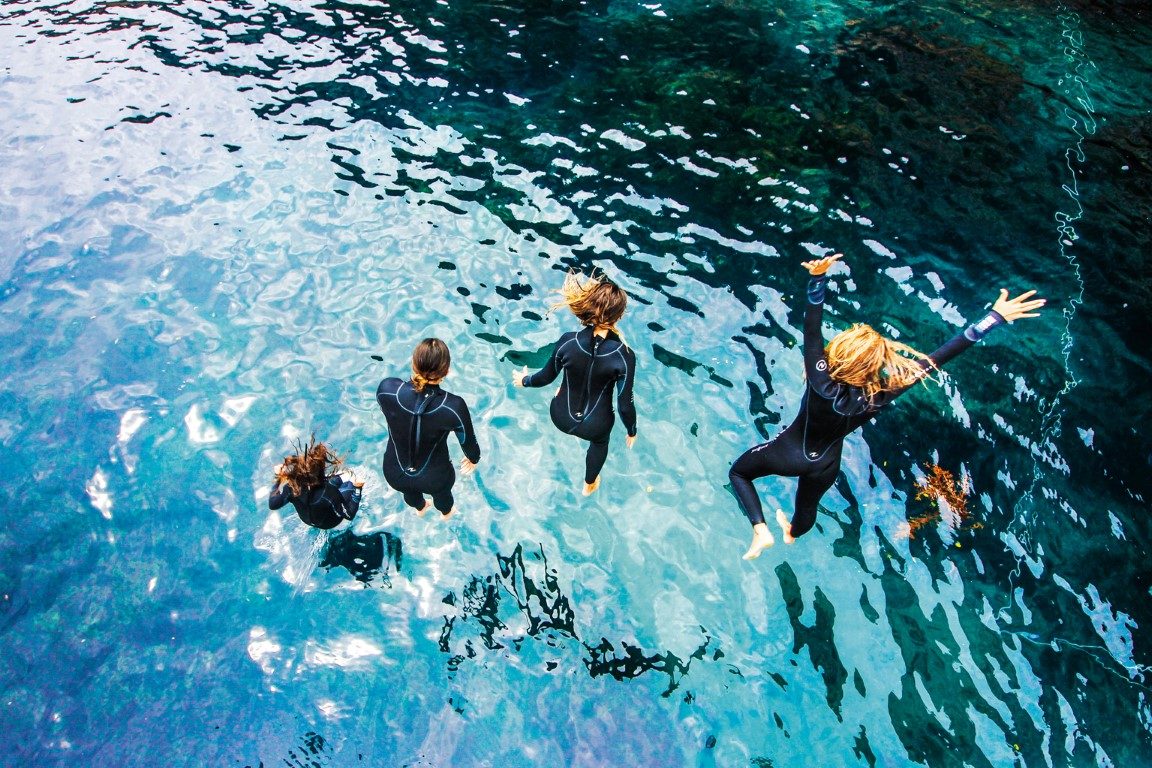
You may be lucky to encounter any of these on the trip between mainland and islands, but you’ll find a far more colourful variety of fish during your snorkelling. Most striking are the shoals of blue maomao, but other common species include demoiselle, leatherjackets (triggerfish) and the ubiquitous snapper – in total some 125 species call these islands home. We saw a sunfish – not the most elegant form of marine life in my opinion – but it was the first I’d ever encountered.

My favourite experience? Swimming within a vast shoal of trevally – a little ‘other-worldly’ but very special. Decorating the rocks are various soft corals, sponges, anemones, gorgonian fans and expansive kelp forests. Majestic.
Not for nothing did the legendary French oceanographer Jacques Cousteau declare the Poor Knights one of the world’s top 10 dive spots.
Geology
It might not be obvious looking at the islands, but they are the remnants of a caldera from a massive volcano that shaped this part of New Zealand some four million years ago. This accounts for their craggy appearance. The turbulent past has also left the islands with unique geological features.
Among them are extraordinary underwater tunnels jammed end to end with blue maomao. You’ll need a scuba tank to witness this crowded house – you literally have to force your way through the fish to get from one end to the other – but they live everywhere and are easily visible to snorklers.

Above the water are numerous caves and rock arches – including the famous Rikoriko – the world’s largest cave by volume (221,494m3). Its entrance is sufficiently large for tour boats – like Perfect Day – to enter a cathedral-like cavern.
The cave measures 130 by 80m, with a ceiling height of 35m and extends 26m deep below water. Inside, with the boat’s engines switched off, it’s awe-inspiring – a bit like being in a cathedral. Multi-coloured lichens grow on the walls and the acoustic is legendary – numerous vocal artists have performed within it. On a less tuneful note, there is also a rumour that Rikoriko became the perfect bolt-hole for a Japanese submarine undergoing emergency repairs during WWII.
Bird life
I’m not sure what was going on with the birds and fish during our visit, but I can assure you I’d never before come across so many frenzied ‘workups’ – or of such a size. The sea appeared to be boiling around Perfect Day – the fingers among my angler friends began to twitch uncontrollably.
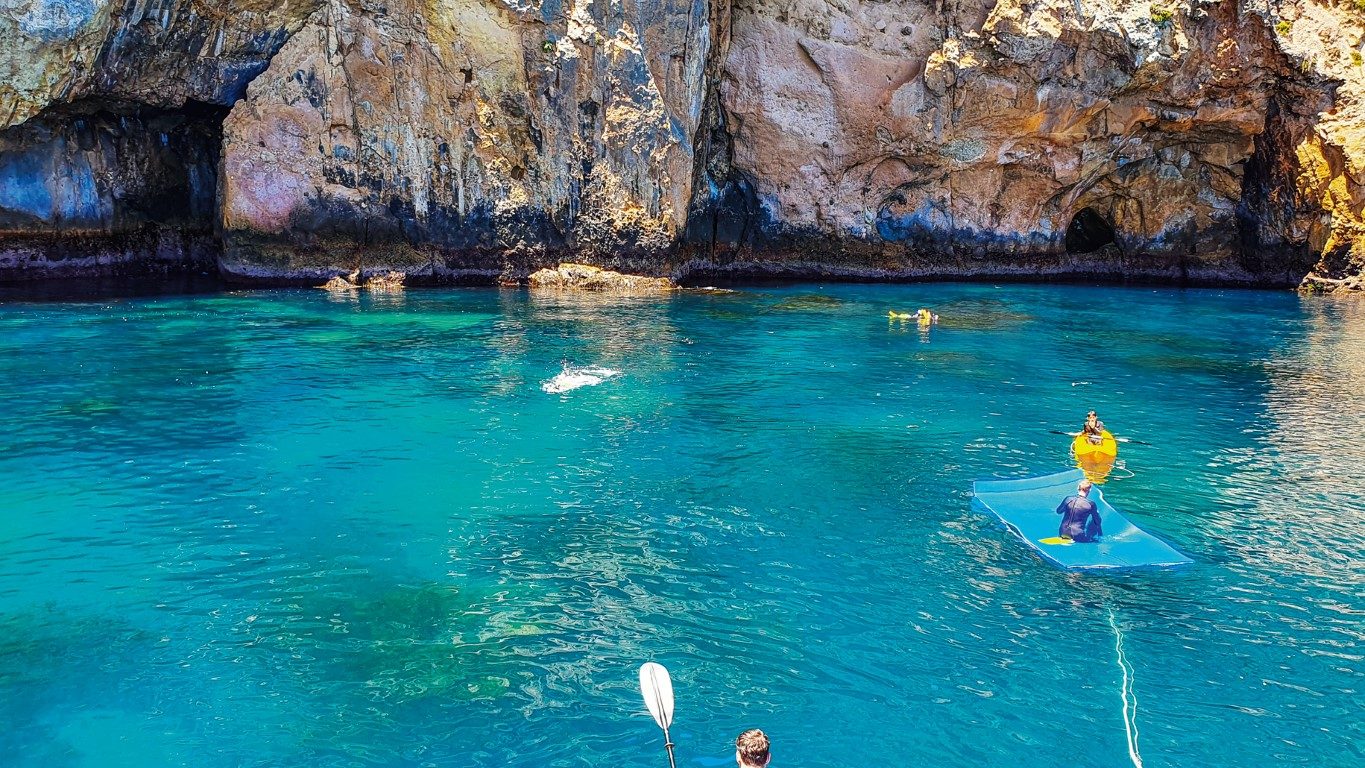
Much of the activity is generated by the vast number of Buller’s shearwaters that breed on the islands – an estimated 200,000 pairs – though the islands are also a nursery for Australasian gannet colonies. Why the latter insist on returning to the same guano-covered pinnacle every season – when there are plenty of other cleaner and less-smelly alternatives nearby – remains a mystery. Various other ‘land-based’ species live on the islands themselves.
So if Covid’s scuppered your travel plans this summer, you could do a lot worse than head to the Poor Knights for a perfect day.





